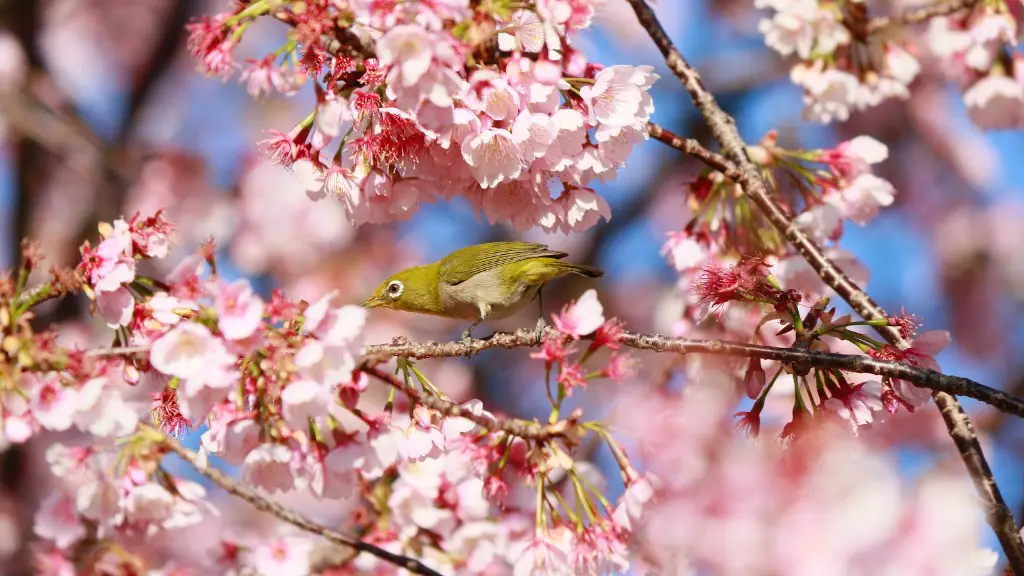Palm As Tree: A Comprehensive Overview
Palm trees have become a ubiquitous part of the landscape across much of the world, creating forests in which to relax, providing beautiful scenery to view, and offering up coconuts for food, oil, and other uses. But the question remains: are palms really trees?
The answer to this question is both yes and no. Palms can be considered trees, depending on which definition you use. The simplest way to define a tree is a woody perennial plant with a single stem and secondary branches that can reach a height of more than 33 feet (10 m). By this definition, palms certainly qualify as trees. However, some definitions of a tree are more complicated, and may include things like xylem and phloem tissue, secondary growth, and specific types of photo-synthesis.
When it comes to taxonomy, the palm family is its own group, with more than 2,500 species falling within its scope. While they have similarities to other trees, they also have unique characteristics that set them apart. For example, palms do not have a growth ring like other trees and their trunks are made of fibrous material instead of wood. Furthermore, many palm species are monocots, meaning they grow from a single seed leaf. This is different from other trees, which often produce two seed leaves.
In terms of habitats, palms can be found in a range of climates, from cool temperate rainforests to tropical regions. They are particularly well adapted to living in arid climates, where their long leaves help to prevent water loss. Additionally, their leaves are able to manipulate the amount of sunlight they absorb, making them highly efficient photosynthesizers. Palms are also sometimes considered to be among the most aggressive species of trees, as they are able to dominate their environment and crowd out competing species.
As an important food source and source of material, palms have been integral to cultures around the world throughout history. For example, in many Asian cultures, palm oil is a significant source of nutrition and has been used in food and medicine. In addition, many types of weaving use palm-derived fibers, such as the pandanus fruit, which is found in Polynesia.
When it comes to the environmental impact of palms, there is some debate. While some argue that palm monocultures cause a great deal of damage to local environments, others point to their ability to store carbon and their hardiness in extreme environments. For example, in areas affected by deforestation, palms may be a viable way of restoring the landscape and providing much-needed shelter.
Ecological Benefits of Palms
Palms are incredibly important for their environmental benefits, providing both food and shelter for numerous species, as well as contributing to the carbon cycle. They also help to protect ecosystems by providing a refuge for birds, insects, and other wildlife. Furthermore, palms are often the first species to take root in areas that have been damaged by deforestation, restoring the environment and helping to prevent erosion.
Palms also have a number of economic benefits, providing a source of income for those who cultivate them. In many tropical regions, the harvest of palm fruits is a lucrative business, as they can be used to make soaps, cosmetics, and cooking oil. Additionally, the harvesting of the leaves can provide clothing, roofing thatch, and other materials for building and decoration.
The importance of palms does not end there, as they also provide an important source of oxygen, helping to regulate the global climate. In addition, their deep roots systems help to prevent soil erosion, allowing arid lands to remain fertile and productive. Finally, palms are incredibly resistant to drought and wind, making them ideal for long-term planting and sustainable agriculture.
Threats To Palms
Unfortunately, palms are under threat from a number of different sources. The foremost of these is deforestation, which is often done to make way for agriculture or industrial development. This can have a devastating impact on local ecosystems and can severely reduce the number of palm species in an area.
In addition, global climate change has caused drastic shifts in temperature and rainfall in some regions, affecting the resilience of palms and causing them to become more vulnerable to disease and pest infestations. Finally, illegal harvesting and unsustainable cultivation practices can have a detrimental effect on palm populations, leading to population decline and the loss of essential habitat.
Protecting Palms
Fortunately, there are ways to protect palms from further harm. On a global scale, conservation efforts are in place to protect endangered species and preserve rainforests, ensuring that palm populations remain healthy. In addition, sustainable palm cultivation methods are being employed in areas where artificial manipulation of the environment can lead to improved growth and better harvests.
On a local level, efforts to promote the sustainable harvesting of palms are essential. This includes ensuring that communities are educated on best practices and given access to training in harvesting methods, as well as providing them with financial incentives to protect palms and other tree species.
Additionally, it’s important to support those working to protect palms, whether through donations to conservation organizations or providing support to local initiatives. With the right support, we can ensure that palms continue to thrive for years to come.
Global Significance of Palms
Palms are an incredibly important part of our global ecosystem and culture. They provide food, shelter, and resources to countless species, protect against soil erosion, and act as valuable sources of income for many communities around the world. Given their importance, it is vital that we take steps to protect them and ensure their continued success.
A good place to start is by raising awareness of the need to protect palms, educating people on their vital role in the global ecosystem. We can also support organizations working to protect palm species on a local and global level, and commit to sustainable palm management practices in our own communities and regions.
Palm Oil Use & Controversy
Palm oil is a highly sought-after ingredient, found in a wide range of products, from food and fuel to cosmetics and detergents. However, palm oil production has come under fire in recent years due to concerns about environmental damage and animal cruelty.
While the majority of palm oil is sustainably produced, many areas are still affected by destructive farming practices, leading to the destruction of rainforests and a dramatic reduction in the number of palm species. This can have a drastic impact on local ecosystems, destroying habitats, driving species to extinction, and contributing to climate change.
In addition, there are also concerns about animal welfare, as the harvesting of oil palm fruits can be extremely hazardous for animals such as orangutans and elephants. Sadly, the production of palm oil has been linked to their deaths, as some are forced to live in unsafe and cramped conditions.
The good news is that, with increased awareness and changes in practices, it is possible to ensure that palm oil production is sustainable and animal-friendly. This includes the implementation of responsible farming practices and the use of methods such as certification systems and traceability to ensure that supply chains remain transparent and ethical.
Palm Oil Alternatives
As concern about palm oil production has grown, many companies and consumers are looking for alternatives that are kinder to the environment and animals. One of the most promising is coconut oil, which is produced using a fraction of the land and resources required for palm oil production.
Olive oil, sunflower oil, and rapeseed oil are also popular alternatives, with many brands making the switch away from palm oil for a variety of reasons. Additionally, some companies are exploring new ways to create palm oil substitutes, such as using yeast to create molecules that mimic the structure of palm oil molecules.
Regardless of the alternative chosen, it’s important to ensure that it is sourced and produced responsibly, so as not to have a negative impact on the environment or local communities. With the right approach, it is possible to create a sustainable and ethical alternative to palm oil.





